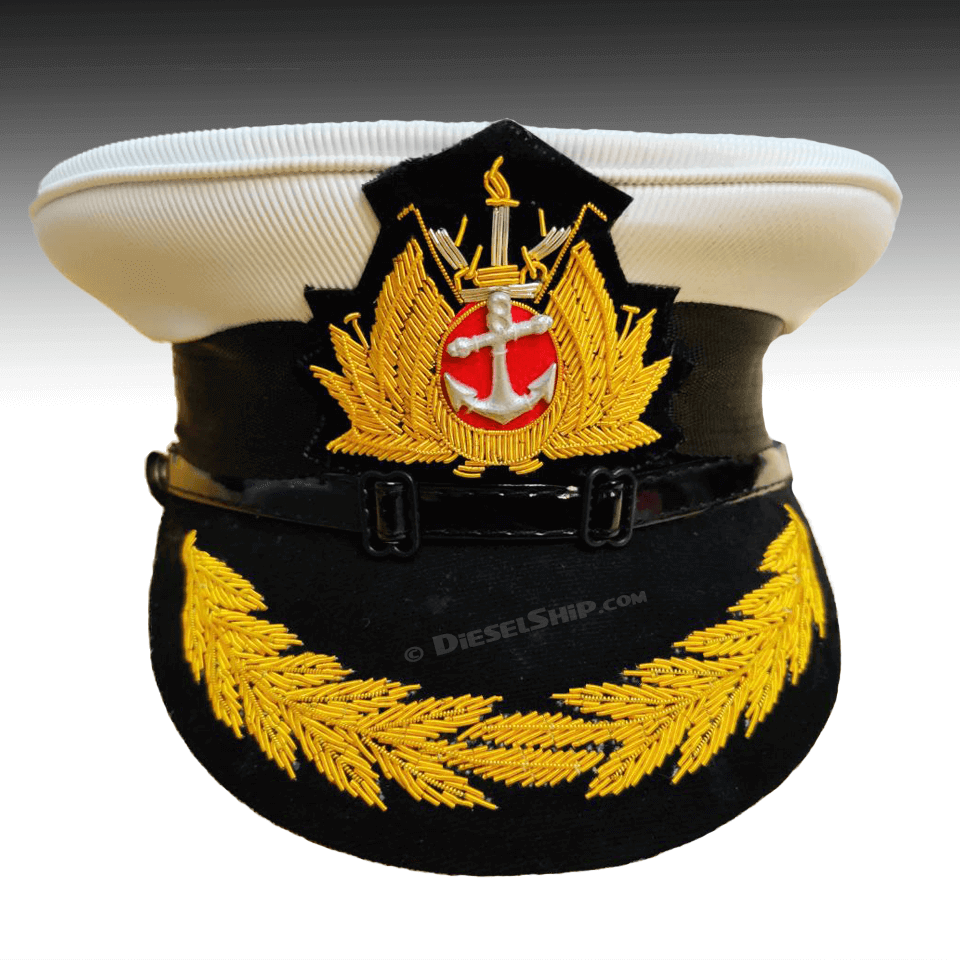

Merchant Navy peak cap for Master and Chief engineer
₹ 1,500.00
Merchant Navy peak cap for Master and Chief engineer
- Merchant Navy White Fixed Top Cap – Black Peak
- Fabricated with polyester cotton
- Fabricated with Embroidered Anchor Badge
- Stiffened with hard lining material.
- Washable, Stays like new even after wash.
This product is strictly non-returnable and non-refundable currently due to COVID-19 restrictions.
Refer our Product Policy for details.
Merchant Navy peak cap for Master and Chief engineer
- Merchant Navy White Fixed Top peak Cap – Black Peak
- Fabricated with polyester cotton
- Fabricated with Embroidered Anchor Badge
- Stiffened with hard lining material.
- Washable, Stays like new even after wash.
Available Collar Sizes | 55 cm | 6 3/4 inches |
| 56 cm | 6 7/8 inches |
Merchant navy peak cap for all other ranks are available here. Click here
What is a peak cap
The peaked cap, service cap, barracks cover or combination cap is a form of headgear worn by the armed forces of many nations, as well as many uniformed civilian organisations such as law enforcement agencies and fire departments. It derives its name from its short visor, or peak, which was historically made of polished leather but increasingly is made of a cheaper synthetic substitute.
The term forage cap is also used though that also applies to “field service cap” or the side cap
Other principal components are the crown, band and insignia, typically a cap badge and embroidery in proportion to rank. Piping is also often found, typically in contrast to the crown colour, which is usually white for navy, blue for air force and green for army. The band is typically a dark, contrasting colour, often black, but may be patterned or striped.
In the British Army, each regiment and corps has a different badge. In the United States Armed Forces, the cap device is uniform throughout service branch, though different variants are used by different rank classes.
History of peak caps
The peaked cap originated in late 18th or early 19th-century Northern Europe, usually worn by working-class men. In the later years of the Napoleonic Wars, it began to appear in the senior ranks of the Russian and Prussian armies, being popular because of its comfort and light weight, as opposed to the cumbersome bicorns and shakos that were standard duty issue. During the Biedermeier period (1815–48), they became universal dress for German and Austrian civilian males of all classes, and for the entire 19th century, they were popular with the working classes all over Northern Europe, although in Britain the flat cap was preferred by civilians towards the end of the century.[citation needed]
In 1846, the United States Army adopted the peaked cap during the Mexican-American war due to the unsuitability of the shako in the hot Mexican climate. In 1856, a form of peaked cap was adopted by petty officers of Britain’s Royal Navy, in imitation of an undress headdress worn by officers from as early as 1827. The British Army adopted peaked caps in 1902 for both the new khaki field dress and (in coloured form) as part of the “walking out” or off-duty wear for other ranks. A dark blue version was worn with dress blues by all ranks of the U.S. Army between 1902 and 1917.[citation needed]
During the 20th century, the combination or peaked cap became common in the armies, navies, air forces and police forces of the world, forgone in combat by common soldiers in favour of more protective combat helmets.
| Weight | 0.45 kg |
|---|---|
| Dimensions | 30 × 24 × 16 cm |
| Cap Size | 55 cm ,56 cm ,57 cm |











